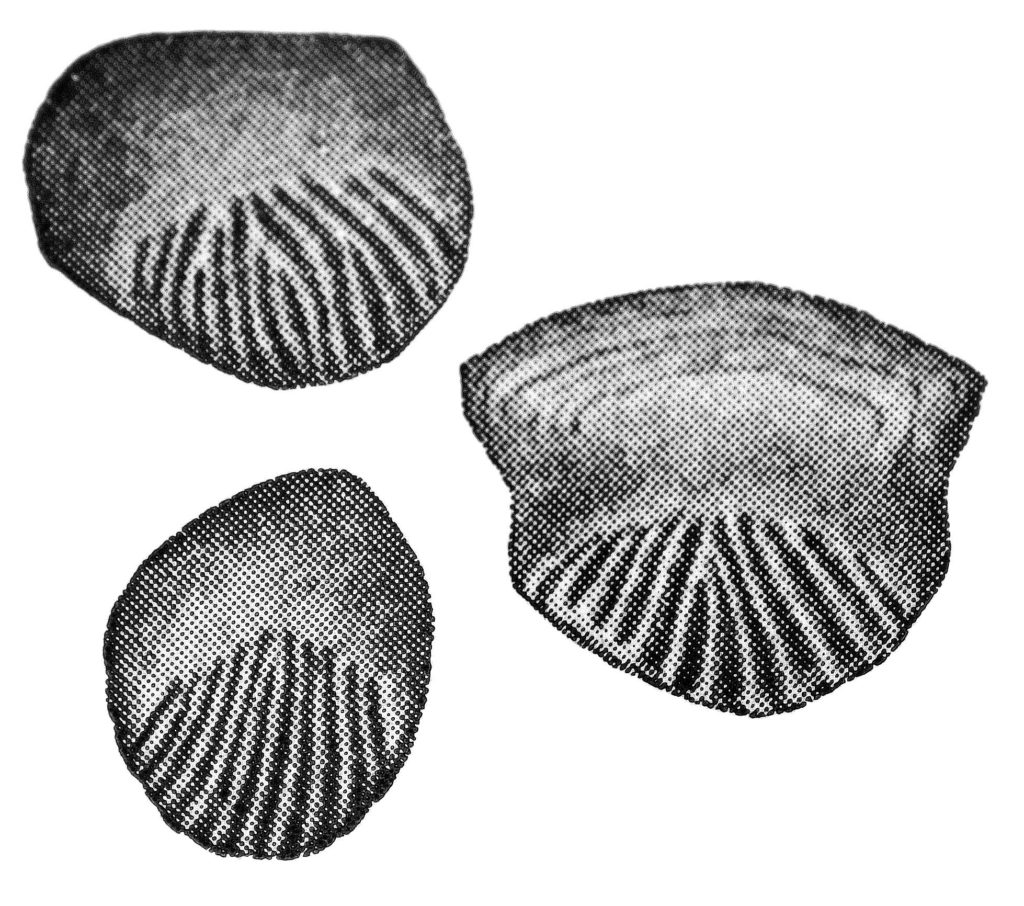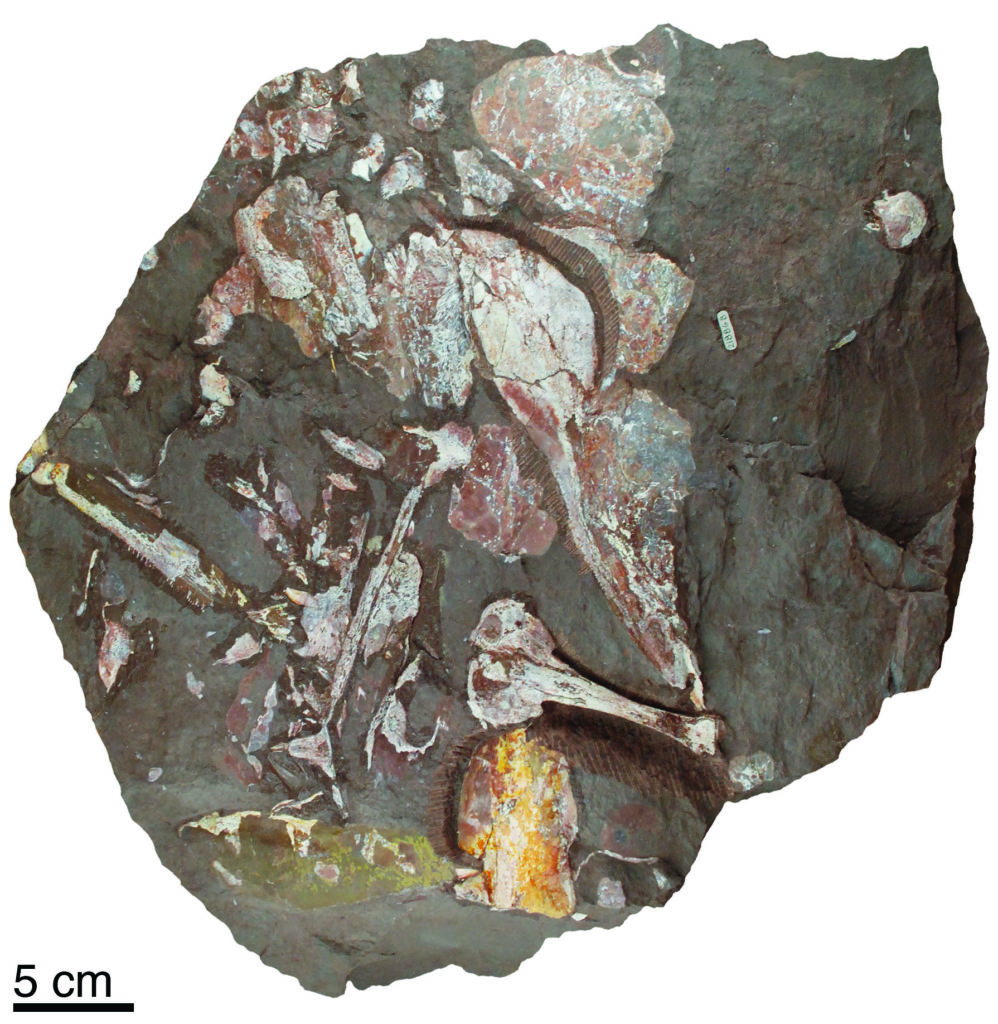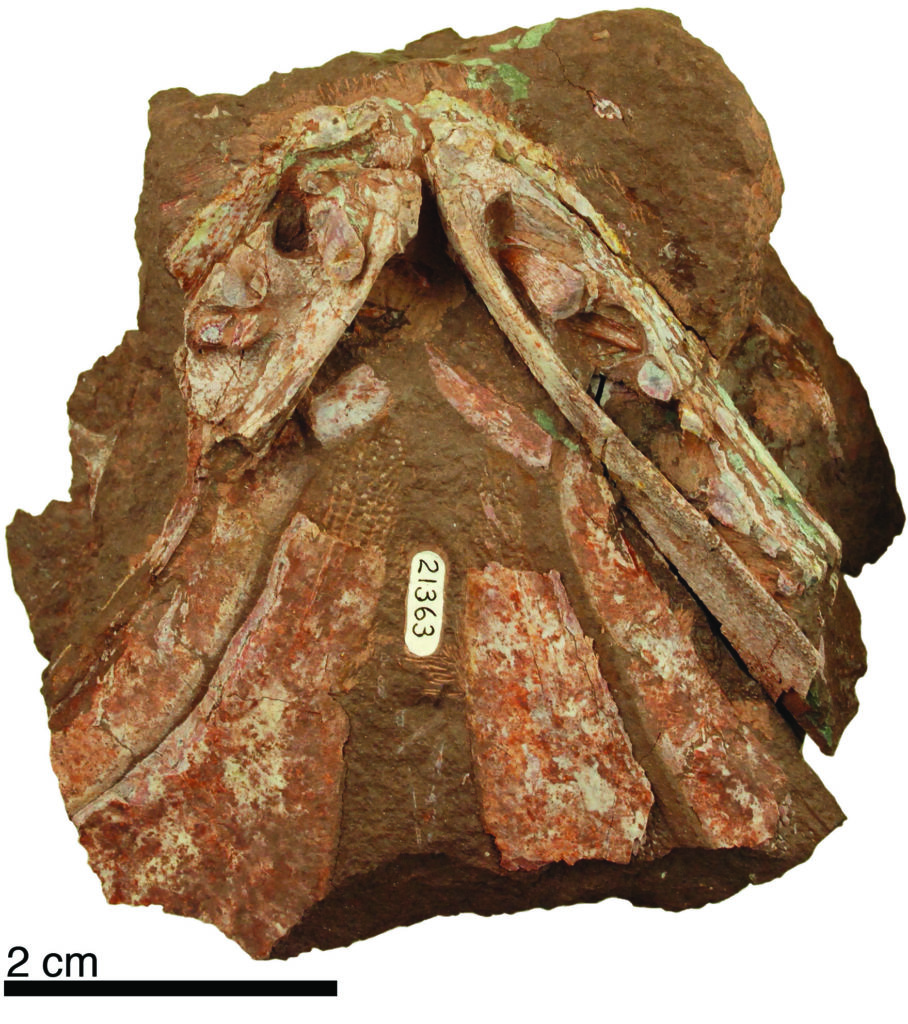A Fish By Another Name
By Ted Daeschler, PhD
August 27, 2019
Our ongoing effort to collect Late Devonian vertebrate fossils (370 to 360 million years old) in Pennsylvania has resulted in lots of new discoveries from highway road cuts exposing the rocks of the Catskill Formation.
When a series of road cuts was made through the Catskill Formation along Route 15 (Interstate 99) in Lycoming and Tioga Counties between 1995-2015, we arranged access to the sites and collected a variety of fossil animals from those areas. Among the new fossils are specimens that have allowed us to re-describe a puzzling lobe-finned fish that was first collected in the same area in 1840 and described in 1889.
Holoptychius ? radiatus was named by J. S. Newberry in 1889 based on a handful of distinctive scales (Fig. 1) that were found at a railroad cut in Tioga County. Since that time, this taxon has been mentioned in publications that reviewed the fossil fish from the Catskill Formation, but its defining characteristics were based on the scales alone, leaving a lot to be desired when it came to a fuller understanding of the species.
Newberry named the new species radiatus based on what he saw as radiating ridges on the exposed portion of the scales, and he placed the species in the genus Holoptychius based on the best comparison that he could make between the Pennsylvania fossils and other Devonian fish known at the time.
Newberry’s lack of confidence in his assignment of the species to Holoptychius is reflected in his use of the "?" after the genus name within the binomial. In the text of the 1889 description Newberry writes “this question will doubtless be solved by future discovery.”
 Fig. 1 Scales of Holoptychius ? radiatus from the original description in 1889
Fig. 1 Scales of Holoptychius ? radiatus from the original description in 1889
Well, after more than a century, and as Newberry predicted, that question has been solved by new discoveries! During the past 20 years, our collections from Lycoming and Tioga Counties include specimens with the same distinct scale type, and importantly, those scales were found in association with skull material and jaws (Figs. 2 and 3) that allow a much better understanding of the nature of the species. We can now confidently document what makes the species unique, bringing it into analyses of diversity and evolution with more complete information.
 Fig. 2 Large block showing skull material of Holoptychius ? radiatus in association with the distinct scales that previously defined the species
Fig. 2 Large block showing skull material of Holoptychius ? radiatus in association with the distinct scales that previously defined the species
Documenting the true nature of Holoptychius ? radiatus was rewarding, but a significant issue remained. Newberry had tentatively put the species within the genus Holoptychius, a grouping of species that we now know is only distantly related to the Pennsylvania form. With our current understanding of fossil fish diversity, and with a more complete description of the species, we also needed to modify the scientific name to reflect an appropriate grouping.
As Jason Downs, PhD, co-author of the recent paper, put it, "the new specimens reveal details of a distinct species that has been hiding behind the name Holoptychius for more than a century." Jason Downs, PhD, is a Research Associate at the Academy of Natural Sciences and Assistant Professor at Delaware Valley University.
 Fig. 3 Articulated lower jaws and the bony elements between the jaws (submandibulars and gulars) of Langlieria radiatus
Fig. 3 Articulated lower jaws and the bony elements between the jaws (submandibulars and gulars) of Langlieria radiatus
First, the old name suggested that Holoptychius ? radiatus was part of a group of sarcopterygians (lobe-finned fish) called porolepiforms, a type of primitive lobe-finned fish most closely related to living lungfish. The new information we collected instead places the species within the group that is called tristichopterid sarcopterygians, moving it up the family tree of lobe-finned fish to a position closer to early limbed animals than to lungfish.
Next, we re-assigned the species to a genus of tristichopterid sarcopterygian with which it shares many features. That genus is Langlieria, a group name first used in Langlieria soqueti, a similar form from the same time period in Belgium.
So, now we have brought the Pennsylvania species out of the murky darkness by discovering many more details about the species and given it a clearer place in the tree of life by re-assigning it to a group with its most closely-related forms.
This has all been codified in the scientific literature in the paper entitled "New material supports a description and taxonomic revision of Holoptychius ? radiatus (Sarcopterygii, Tristichopteridae) from the Upper Devonian Catskill Formation in Pennsylvania, USA" recently published in the Proceedings of the Academy of Natural Sciences of Philadelphia. Authors of the paper were myself, Jason Downs, PhD, and former Swarthmore College student Chelsea Matzko.
This project is a good example of the gradual accumulation of relevant fossil specimens and the methods we use to evaluate and associate scattered fossil remains. At any moment in time we are adding new knowledge by collecting new fossil material.
This means that we have many projects progressing concurrently with each at a different stage. It is not uncommon for many years to pass from beginning to end of a project, and the path is sometimes unpredictable, though always exciting.
Ted Daeschler, PhD, Associate Curator of Vertebrate Zoology and Professor, Department of Biodiversity, Earth and Environmental Science, Drexel University